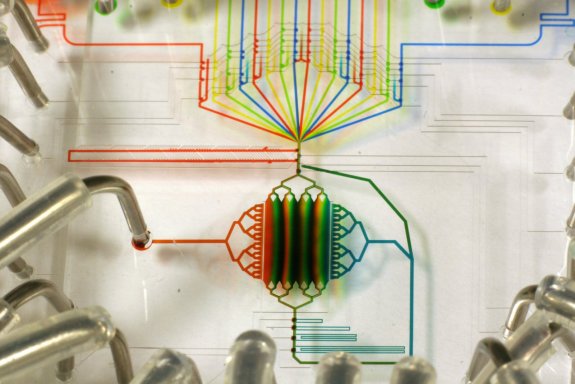Many of you, especially my fellow science/engineering nerds, may be familiar with microfluidics. Basically, it’s just fluid flowing through really small channels, even really really small channels. Microfluidics has a huge number of applications that span an impressive variety of fields. For instance, in bioengineering, scientists fabricate microfluidic devices that screen blood for diseases like cancer, or monitor biomarkers in the blood (think glucose monitors for diabetics). Physicists and mechanical engineers use these devices to study new phenomena at small scales, and some research groups have even used microfluidic chips as lenses for viewing biological samples.
But there’s a problem. Normally, microfluidic chips/devices are fabricated in clean rooms using the same techniques and equipment used to fabricate semiconductors. If I have a great idea and don’t happen to be currently working in a university research lab, I better hope that the guy down the street just put his $50,000 mask aligner on CraigsList and that he’s throwing in a free O2 plasma etcher and some filters for your in-home clean room. Not likely. There must be a better way. Enter DIY Microfluidics.
Check out this link if you want to learn more about microfluidics or are interested in some on the cheap, quick ways of making some sweet devices. Comment on any ideas you would like to share and get some feedback.
http://fluidicmems.com/2010/04/21/diy-microfluidics/
P.S.: The following is a great microfluidics tutorial from Paul Yager at University of Washington Bioengineering. The rest of Dr. Yager’s work is pretty inspiring as well.
http://faculty.washington.edu/yagerp/microfluidicstutorial/tutorialhome.htm
